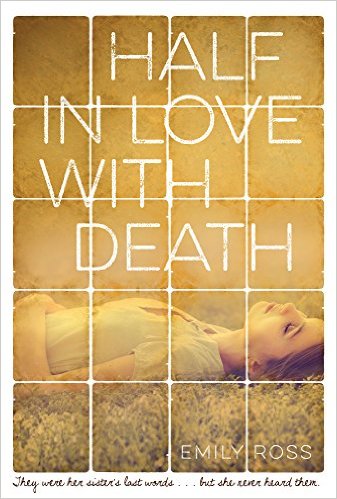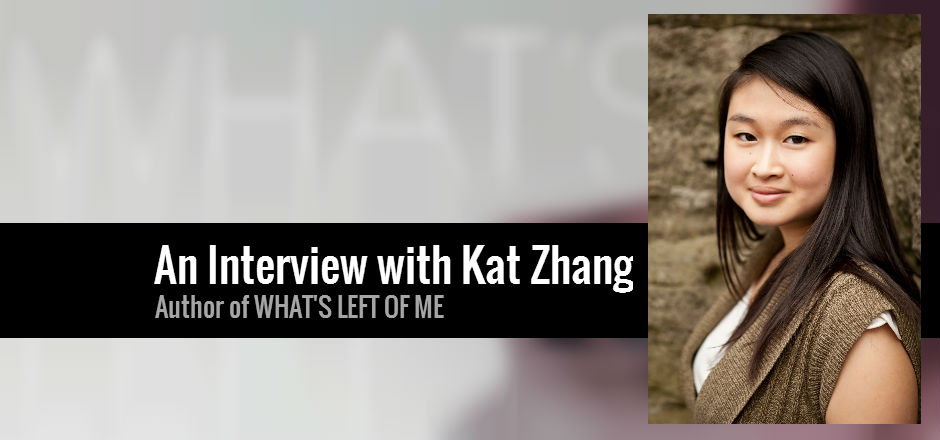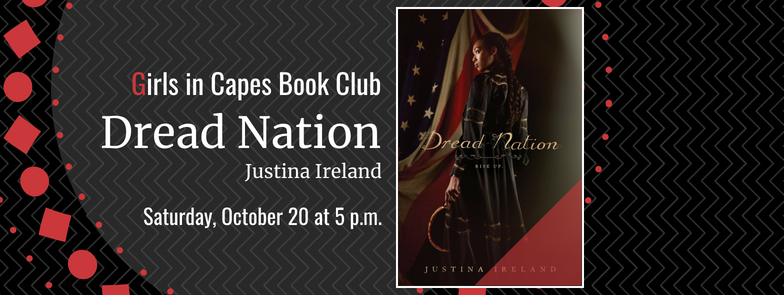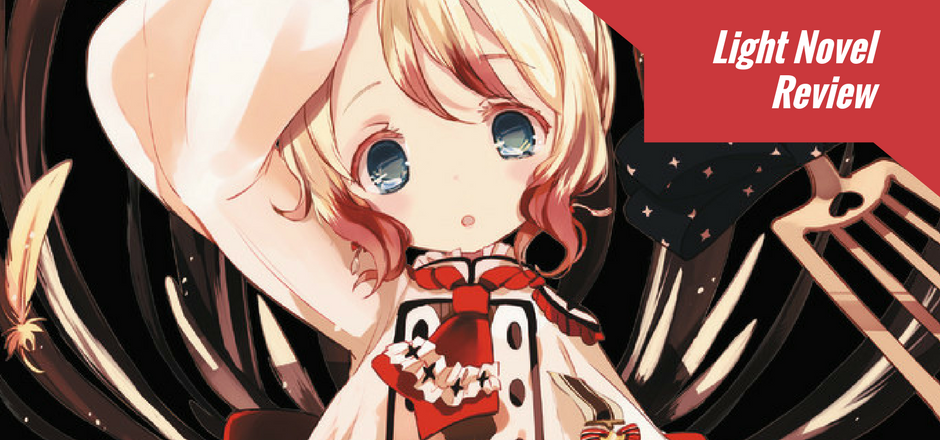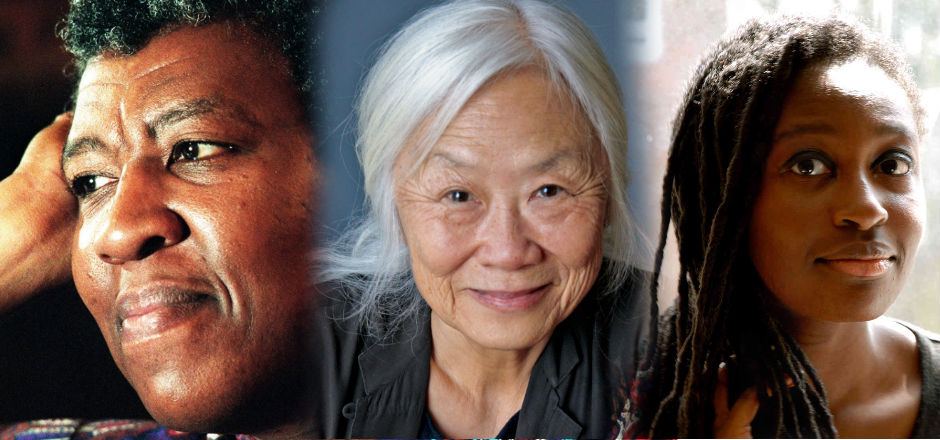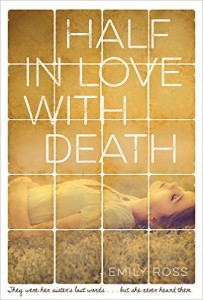 Last month I had the pleasure of talking with Emily Ross, the author of the new YA thriller Half in Love with Death.
Last month I had the pleasure of talking with Emily Ross, the author of the new YA thriller Half in Love with Death.
From the publisher:
“It’s the era of peace and love in the 1960s, but nothing is peaceful in Caroline’s life. Since her beautiful older sister disappeared, fifteen-year-old Caroline might as well have disappeared too. She’s invisible to her parents, who can’t stop blaming each other. The police keep following up on leads even Caroline knows are foolish. The only one who seems to care about her is Tony, her sister’s older boyfriend, who soothes Caroline’s desperate heart every time he turns his magical blue eyes on her. Tony is convinced that the answer to Jess’s disappearance is in California, the land of endless summer, among the runaways and flower children. Come with me, Tony says to Caroline, and we’ll find her together. Tony is so loving, and all he cares about is bringing Jess home. And so Caroline follows, and closes a door behind her that may never open again, in a heartfelt thriller that never lets up.”
With our discussion ranging from books to writing inspiration, she gave some fascinating insight into her research and what has helped her throughout her writing process.
The interview has been edited for clarity and length.
Girls in Capes: I wanted to ask you about how you came across this story. It’s based on a real person, right?
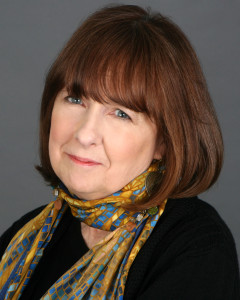 Emily Ross: It is, actually. It’s kind of an interesting story. I had written two novels that were sort of similar to this one, but they were just failures – I couldn’t figure out how to plot them. So I was talking to my sister, kind of complaining, and she said, “You should take a true crime and use that for your plot, then you would have a plot.” And she said, “Not only that, but I know one you should use.”
Emily Ross: It is, actually. It’s kind of an interesting story. I had written two novels that were sort of similar to this one, but they were just failures – I couldn’t figure out how to plot them. So I was talking to my sister, kind of complaining, and she said, “You should take a true crime and use that for your plot, then you would have a plot.” And she said, “Not only that, but I know one you should use.”
And she told me that when she was twelve years old she had been obsessed with this sensational murder that was in the news about this guy, this serial killer that they called The Pied Piper of Tuscon. She said she had read the article over and over and it absolutely terrified her and I was fascinated because for one, I had never heard of this and my sister and I were fairly close, and I had no idea she had this obsession.
So that set off, okay I’m going to find out more about this. It’s about this man named Charles Schmid. He was 23 and in 1964 – and this is pretty creepy – but he killed a fifteen-year-old girl named Aileen Rowe and buried her in the desert, and he actually did it with two friends, and it was just a totally cold crime to see what it felt like to kill someone. And then a year later he killed his seventeen-year-old girlfriend, Gretchen Fritz, and her younger sister Wendy, who was thirteen.
The thing that really fascinated me was that he wasn’t, when you read about him, that typical sort of guy that was a serial killer. He was pretty popular, good looking in a strange way, he had tons of friends – like huge circle of friends – and all these girls were in love with him. He wrote poetry, played music, and a lot of his friends lied for him. He bragged about what he had done and they covered up for him. So I decided that this was a pretty interesting case and would use some of it in my book.
I ended up writing a very different story, but it definitely took off from that. I’m very thankful to my sister, without her I never would have found out about it. I learned – this is sort of the creep factor – I learned he killed the two sisters on my birthday. But it’s a disturbing case, and I got to know him very well. He’s dead now, he was killed in prison.
GIC: When did they catch him? How long was it after he actually committed the murders?
ER: Not that long. After he killed the two sisters, he was telling people that he had done it. He told a friend of his, this man named Richie Bruns – and Richie Bruns was kind of a badass himself – but he became terrified that Schmid was going to kill his girlfriend. And he started stalking his girlfriend and trying to protect her and he ended up getting arrested for that, but he gave up Charles Schmid and told them what he’d done. So it was probably less than a year. Finally somebody ratted on him.
GIC: Surprising that no one else had, that’s scary.
ER: Some of them said they didn’t believe him, they thought he was bragging, making up stories. He was a big liar, he lied about everything. Very, very strange. And I love that it took place in Tucson, in Arizona, and in the Arizona desert. That seemed like an interesting location to me.
GIC: Are there any books that you’re really into? What is your most recommended book right now?
ER: Okay, so I do have a list. I recently read We Were Liars by E. Lockhart, and I really liked that. It’s written in this very strange style. It’s kind of terse, and kind of poetic, and very understated and it’s very twisty, the plot is very twisty. There’s a huge twist at the end which I won’t tell you because that would be a spoiler. That was a very cool book. And I also read The Girl on the Train [by Paula Hawkins], which I am a huge fan of.
GIC: Yeah, I have heard good things.
ER: That’s a complete page-turner, and it’s told by this woman who’s a totally unreliable alcoholic narrator. Some people really don’t like her but I thought it was a really interesting point of view and it’s very cool, because it’s like a whole mystery that unfolds that she sees out the window of a train.
GIC: Interesting. So it’s kind of like Gone Girl – you don’t realize it at first, but you realize that you have an unreliable narrator
ER: Yeah, yeah, and you really don’t know what’s true and you really don’t know up to the end what’s true. So she really keeps you going. And the book I would recommend, I just finished a YA mystery called Blue Voyage by Diana Renn and I absolutely adore that book. It has this really spunky narrator, this young teenage girl who is also a rock climber, and she’s not afraid of heights, and I’m really afraid of heights. It takes place in Turkey and the locale is described really beautifully. It’s one of those books that I’m really happy in the world of the book and I’m really sorry when it ends, and that doesn’t happen to me very much. She has to unravel a sort of international smuggling ring, so there’s a lot of action and adventure. So that’s a really good book.
GIC: What influenced your writing style in terms of this particular novel?
ER: It’s actually kind of funny, I think I was influenced by the fact that I wrote poetry when I was younger. I love visual language, and sort of physical language, so there is definitely some of that in the book.
And the other thing, this is a funny influence, long before I wrote this book, I watched this movie called Badlands. It was directed by Terrence Malick and it’s a movie about a teenage girl who’s played by Sissy Spacek who runs off with a man, played by a very young Martin Sheen, and the man has murdered her father. It’s set in the Midwest so there’re all these wheat fields and dust, and blue sky, but it’s kind of bleak, and they kind of go off on this killing spree together. It’s this very dark, kind of amoral movie. And it has this music in the background by this composer called Carl Orff, it almost kind of sounds like children’s music so it completely contrasts.
There’s a voiceover almost throughout the entire film where Sissy Spacek kind of tells the story of her love for this man and what happens, and she does it in this really deadpan way. When i was working on my novel, I said, that voice is what I want in my novel. So I would actually listen to film clips and hear the rhythm of her voice and that actually influenced my writing. My main character actually ended up very different from this character, but the way she narrated the movie, I kind of tried to mimic that. That influenced it, and I think the rest of the style is just the way I write. So I really love movies, and that movie really did kind of filter into the book.
GIC: Why do you think that this story is important, or applicable, to how the world is today? Or to the audiences that you’re looking to reach?
ER: Well, you know, I did think about this because it was a very different time. There were no cellphones, no internet. I don’t think the idea of social media existed. There were no Amber Alerts. Kids related to their parents differently, there was this huge generation gap, they were constantly fighting. So it was a different time. But I think the issues, the story is still important.
One of the biggest things in the book is that Caroline, the narrator, is dealing with a loss. Her sister is missing. So how do you cope, as a teen or as anyone, with a loss, when your family is falling apart? How do you get through that? So I think that’s still very relevant today. And also, she deals a lot with, who can she trust? She doesn’t know that a lot of her friends are lying to her, she doesn’t know who’s lying, and I think anyone who has been in high school, that sort of trust issue, are they saying things about me behind my back? I mean, today it’s even worse because they can say things on social media, they have a lot more ways to lie to you and to deceive you. So I think those kind of trust issues are still important.
And sort of the big issue is how people fall in love and you’re sort of blinded by love, and how would you know if the person that you fall in love with isn’t what they seem to be? And maybe “not what they seem to be” in a dangerous way. I think that’s very much an issue. I was thinking, in the 60’s there were all these things, love ins and be ins, and you have like hundreds of kids grouping together in places and kids were exposed – you know a lot of these were supposed to be nice people, and they weren’t. And it was actually dangerous. But today kids go to parties with tons of people they don’t know, and you know, even more so, you have contact with all these people on the internet that you don’t even know who they are. So I think that the issue of learning to discern what people are really like, even if you’re in love with them, even if they’re really cute, you have to discern who the real person is. It’s still a very important story to me and I feel that’s a really important thing, especially for young girls to understand.
GIC: What pieces of research did you find the most surprising or the most shocking when you were writing the book?
ER: There was one thing that really surprised me when I was researching Charles Schmid. I discovered that he wrote poetry in prison. There was a man named Richard Shelton that used to go to the prisons in Arizona and he started a writing program for prisoners. And he really connected with Schmid, he really liked him a great deal, and Schmid was actually quite a good poet, he was very intelligent. Shelton became very close to him. He was so close to him that when Schmid was murdered in prison – he was actually stabbed like a hundred times or something, he wasn’t very well liked – and he was in the hospital, Shelton visited him and really cared about him. He felt that Schmid had become a different person in prison through writing. He’d become such a different person that Charles Schmid changed his name to Paul David Ashley, and Shelton was going to publish his poems but then he was murdered.
So it really made me think about, this was a whole different side of this man that I was researching. I was wondering, would this have been a different story if he had sort of had an artistic outlet when he was younger? Because it really did help him a lot. I found that to be a really interesting bit. And once I found that out, I really looked at the case and was like, well maybe he’s innocent, you know, maybe there’s something here. It was so hard to reconcile this man who wrote this poetry with the man that did these horrible things. So I looked at the case a lot, thinking maybe I’ll find the clue, I’ll figure out that this really didn’t happen. So this is kind of shocking to me, I came across on the internet this picture of him holding this skull of his first murder victim. He had led the police to the body, and sort of that photograph made me realize –
GIC: NOPE, definitely guilty.
ER: Nope!
GIC: Serial killers are really scary.
ER: They really are. I think he was truly a psychopath. You didn’t really know who he was. He could charm people, and people had no clue.
GIC: Did you read at all why he was killed in prison, like was it just because he was a crazy person and nobody liked that?
ER: What I read was that he was actually very arrogant and very kind of stuck-up, and he pissed the other guys off. And you know, they speculate that some of them had known his victims or the families. He was not well liked because he did kill three teenage girls.
GIC: Is there anything you’re working on right now that you can talk about?
ER: I am working on another book, and this book is quite different because it’s going to take place now. It’s going to take place in Quincy, Mass. It’s about about a teenage girl who’s a dancer, and she sort of wants to be a ballet dancer but she’s on a dance team, so it’s sort of a competitive dance world. And she has a dance partner who is this boy named Antoine who suffers from a type of epilepsy where he has like, mini visions, and there’s going to be a murder of someone on the dance team and he’s going to be accused of it. I mentioned Quincy, it’s an interesting city. There’s a lot of diversity here. In some ways, people are very close, even though it’s a city it feels like a small town. It’s also a really gritty city, it’s a hard city for a teen girl to grow up in. There’s a lot of crime – right now there’s a huge opiate crisis – so it’s kind of a combination. I’m interested in a teenage girl growing up in a city that is tough to grow up in.
Half in Love with Death was released Dec. 18, 2015. Learn more about the book on Emily’s website.
—
Christina Casano is the Assistant Editor at Girls in Capes with an interest in TV shows, feminism, and cute animals. A graduate of Miami University, she is a theatre artist currently based in Chicago.
